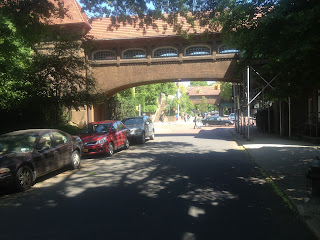 |
| Tudor clubhouse |
 |
| 1923 stadium in background |
The West Side Tennis Club is most notable for hosting the US Open Tennis Championships a total of 60 times, first from 1915 to 1920, and then again from 1924 to 1977. Why is it called the West Side ? Because it first was located on Central Park West in Manhattan from 1892-1902, then at a site near Columbia Univ. (1902-1908). In 1908, the club moved again to a property at 238th Street and Broadway. The new site covered two city blocks and had 12 grass courts and 15 clay courts.
The club hosted the International Lawn Tennis Challenge (now known as the Davis Cup) in 1911. With crowds in the thousands, the club leadership realized that it would need to expand to a more permanent location. In 1912, the site in Forest Hills was purchased. The signature Tudor-style clubhouse was built the next year.
In 1915, the
United States Lawn Tennis Association National Championship, later renamed the US Open, moved to West Side. By 1923, the success of the event necessitated the construction of a 14,000-seat horseshoe-shaped stadium that still stands today. The stadium's first event was the final of the International Lawn Tennis Challenge, which saw the U.S. defeat Australia.
Many entertainers performed at the stadium, including the Beatles (Aug 28/29, 1964).


























